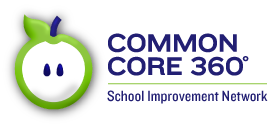On June 7, Washington Post reporter Lyndsey Layton published an article about the Common Core which misconstrued facts, ignored evidence and attempted to paint Bill Gates as the mastermind behind the Common Core. Those of us closely involved with the Common Core know how inaccurate her portrayal was. One teacher in Kentucky, Jana Bryant, chose to write to the Washington Post to remind them that one of the many voices Layton excluded from the article was that of teachers who were a part of the Standards development and are living the experience of implementation right now. Though the Post chose not to publish her op-ed, we’d like to post it in its entirety here:
The Real Force Behind the Common Core
Lyndsey Layton’s portrayal of the debate around the Common Core State Standards completely excluded what is actually important – what is best for American students and teachers.
As a math teacher in Kentucky, I recognized the need to improve standards for students and was supportive of the increased focus and rigor found in the Common Core State Standards for Mathematics, long before I knew how they were funded. I invested my time in them, increasing my knowledge of the Standards and sharing that knowledge through professional development training for my peers. Like so many of my colleagues, we recognized that this was work that needed to be done to help our students succeed.
Too many recent high school graduates are taking remedial courses in college, which places a financial strain on students and parents and decreases the likelihood of the students successfully completing a two- or four-year degree. My subject in particular, mathematics, has become a barrier to graduating high school, affecting career path choices and the ability to earn life-sustaining wages.
Kentucky was the first state to implement the Common Core State Standards for literacy and math, to assess the standards, to design an accountability system based on the standards, and to establish professional support through redirection of state dollars and the support of numerous foundations. Kentucky was also one of six states— and my district, Daviess County Public Schools, was one of six districts in KY— asked to pilot the Literacy Design Collaborative and the Mathematics Design Collaborative, which was funded by the Bill and Melinda Gates Foundation. What resulted from that support was the development of high-quality instructional tools and much needed professional support that ALL teachers across that nation can use as they meet the challenge of implementing the Common Core State Standards.
In Kentucky, my hope is that we continue the record of success we have already experienced. Our high school graduation rate is among the top in the nation and our college- and the career-readiness rate has improved from 34 percent to 54 percent since we adopted the Common Core State Standards.
As if it matters how great work is funded. If someone wants to invest in education, shouldn’t we be happy about it? Access to quality education creates a pathway out of poverty and opens doors for further opportunities. Adequately funding K-12 education is a critical need in every state. We, as teachers, have a lot of more work we want to accomplish and it will all take funding. We want to create and learn from free end-of-year and daily assessments, lesson plans, resources and videos that model best practices in teaching.
Much of the reporting about the Common Core in mainstream media demonstrates a lack of understanding about who is doing the work. As teachers, we helped drive the development of the Common Core State Standards and we are shaping their implementation every day. There is still work to be done, but we are already proud of what we’ve accomplished. We know we are doing a better job preparing students for college and careers.

This post was written by Jana Bryant, a 2014-2015 Hope Street Group Kentucky State Teacher Fellow and the Math Staff Developer for Daviess County Public Schools in Owensboro, KY.
